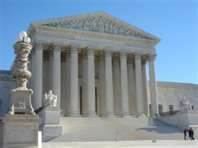Lessons From Sixteen Years of the PLRA and AEDPA
I have some reflections on the great 1996 prisoner litigation reforms in an essay newly uploaded to SSRN. Here is the abstract:
In 1996, Congress adopted two sweeping statutes that were intended to restrict the ability of prisoners to obtain redress in federal court for violations of their constitutional rights. This essay introduces an issue of the Federal Sentencing Reporter assessing the legacy of these two laws, the Antiterrorism and Effective Death Penalty and Prison Litigation Reform Acts, and considers the extent to which these statutes highlight structural flaws in the way that the political and legal systems engage with prisoner litigation.
The essay, entitled “Not So Sweet: Questions Raised by Sixteen Years of the PLRA and AEDPA,” was published at 24 Fed. Sent. Rep. 223 (2012).

